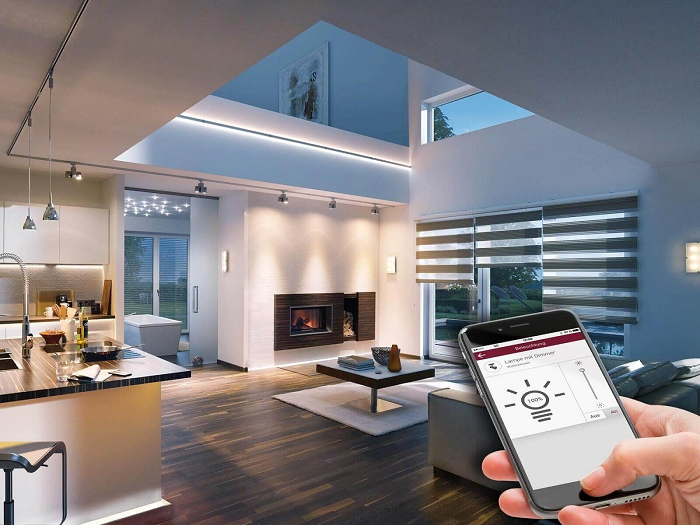
24 Jun Explain to me what a “smart home” is
Smart home systems assume that you can control various devices using one remote control (most often, a regular smartphone or tablet is turned into such a remote control). You can connect many subsystems to the system, for example, heating, door locks, light bulbs, security cameras, etc.P. In addition to the fact that all these subsystems can be adjusted remotely from a single console, in addition to this, they can be configured so that they work automatically or so that you can control them remotely. Working in automatic mode in this case means a lot of things: from self-tuning devices to your lifestyle to their smart work, focused on sensors or a custom algorithm.
You may also have heard such a term as “Internet of things” or IoT when it comes to home automation and smart home with smart devices. This phrase popular today means the concept of interaction of technology with each other. The concept itself is quite complicated and can be considered on different scale, but the term is now most often used by home equipment manufacturers to indicate its ability to connect to the application on your smartphone or tablet to manage this equipment remotely. Most often in the product card that can be connected to the application on the phone, they now write: “The concept of the Internet of things” or “IoT”. Many things, from lighting devices to conditioning and cooking coffee, are now produced with smartnesses, that is, with the ability to work in the concept of the Internet of things. In other words, you can buy a smart coffee maker and set it up to brew coffee when your alarm goes off on your phone. However, this does not mean that all coffee makers with the IoT function will have similar capabilities – everything will depend on the application that is developed for this coffee maker. For example, REDMOND smart coffee makers are controlled through the Ready for Sky application. You can study this application in advance before buying a particular coffee maker and see what features this or that model of coffee maker provides when working with the application. Similarly, it is worth doing with many other gadgets that you buy for a smart home.
Among the smart devices for the home you can find:
– household appliances such as ovens, washing machines, refrigerators, etc.P.
– lighting fixtures and electrical appliances such as thermostats, radiator valves, light bulbs, switches, etc.P.
– safety and security devices such as surveillance cameras, motion sensors, alarms, etc.P.
– home health appliances, including fitness devices, scales, air purifiers, etc.P.
You will be surprised, but new smart gadgets are released almost daily, but are constantly being eliminated from the market because they turn out to be useless, in comparison with more complex devices of approximately the same configuration and with the same functions.
The market for smart devices for a smart home is relatively young, but the competition on it is now quite high. If you buy something from this market too early, you end up with an expensive toy with a short expiration date. That’s why smart home products need to be invested wisely and calculated, listing and recalculating their advantages and disadvantages. Ultimately, you should definitely consider whether a smart gadget will bring benefits in the long run – many smart devices are really useful, for example, some smart air conditioners can save a lot and at the same time constantly maintain the ideal temperature level in the house for a particular user.




No Comments